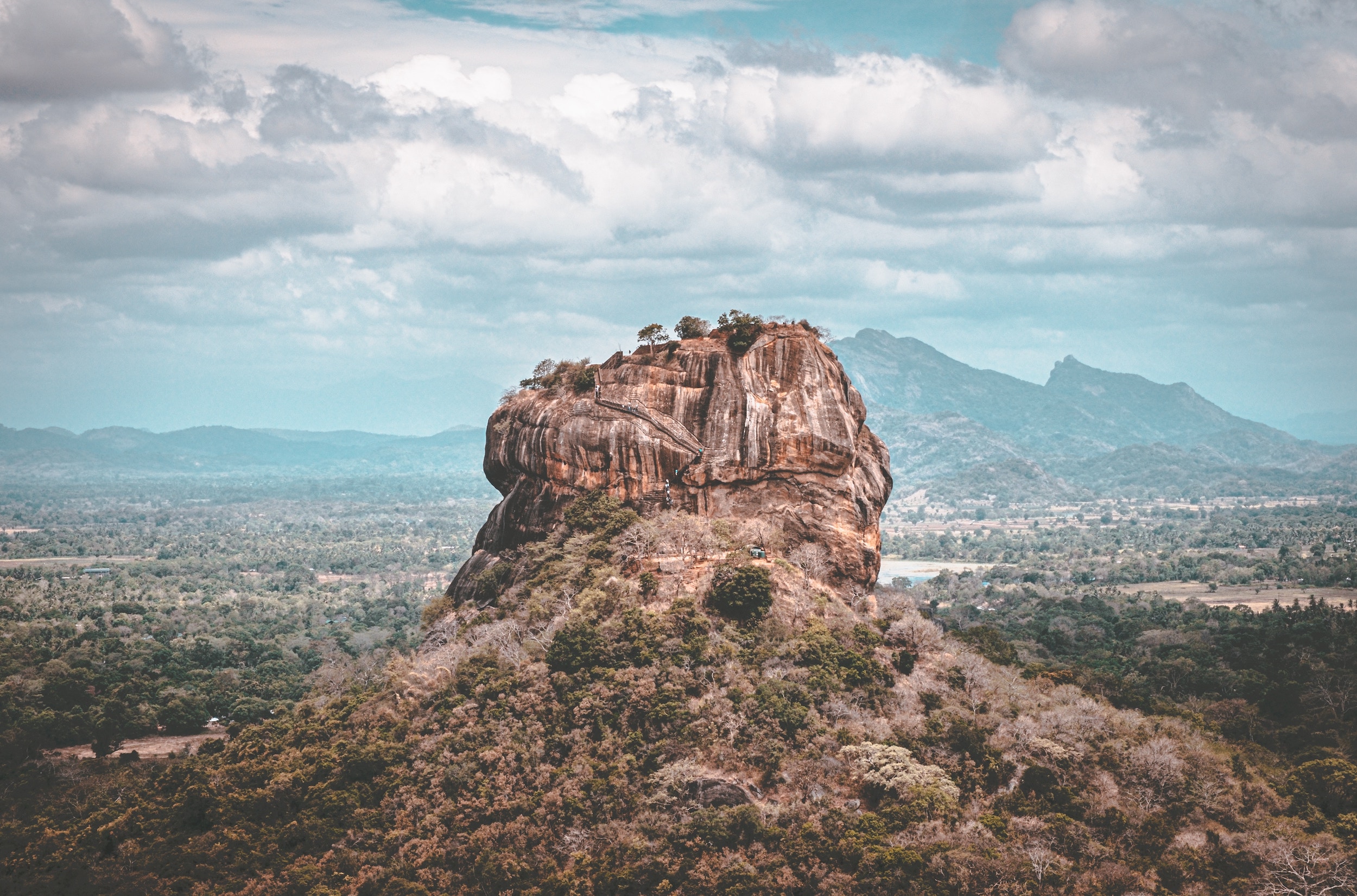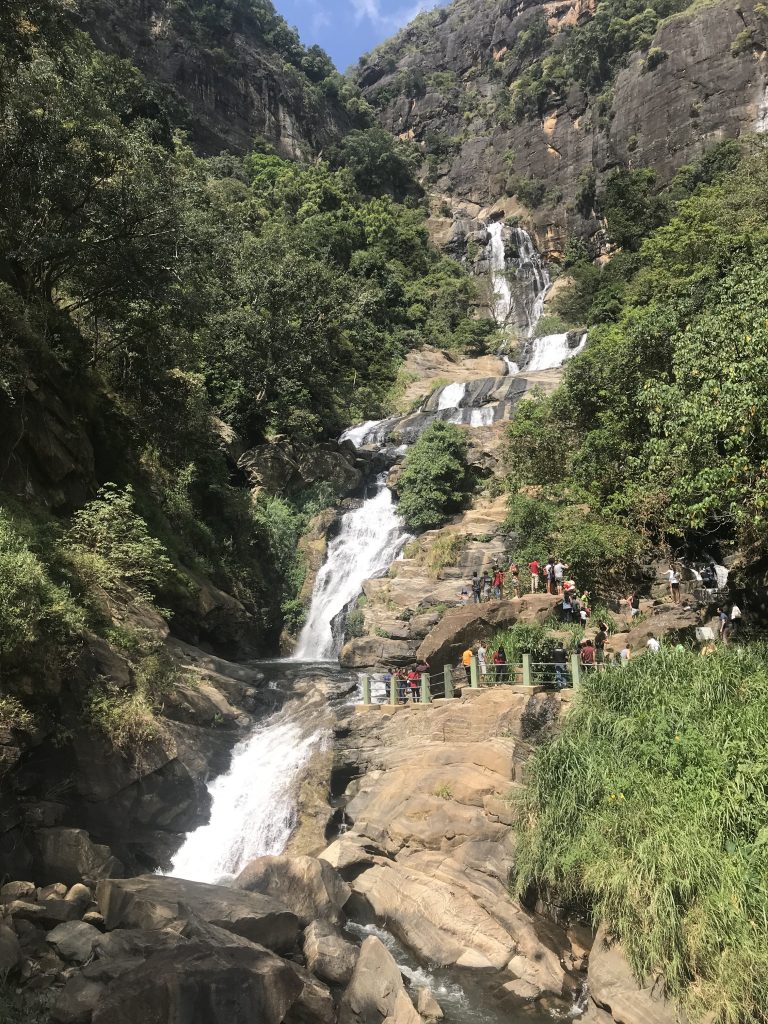News
Unforgettable Sri Lanka
17 April 2019

Sigirya Rock is an ancient rock fortress located in the northern Matale District, near the town of Dambulla in the Central Province, Sri Lanka. The rock is nearly 200 metres high.
Sri Lanka is currently number one in Lonely Planet’s Top Countries to visit in 2019. Always one to follow a trend, rather than start one it seems, I have just come back from an amazing 8 day tour of the island which included historic temples, national parks, the hectic town of Kandy, the beautiful tea plantations of Nuwara Eliya and lots of amazing food!
Sri Lanka has plenty to offer, whether you are a sightseer like me, a backpacker, or looking to work with wildlife as part of a gap year experience.
Where to visit in Sri Lanka if you like wildlife:
- Minneriya National Park – Located in the Central Province near to Dambulla and Sigirya Rock. With a jeep to ourselves (and our guide) we spent about three hours being driven around the park and saw a herd of around 40 wild elephants grazing and bathing at the lake. An amazing day out with beautiful scenery as well as the wildlife!
- Yala National Park – Located around the south east coast of Sri Lanka, Yala was hit by the Tsunami in 2004 at the cost of around 250 lives. Yala was declared as a National Park in 1938 and is home to a wide variety of mammals and birds including leopards, elephants, deer and buffalo. Be warned though, the leopards can be elusive and you may or may not see them during your visit. Sadly, we were unlucky but still enjoyed a great afternoon spotting the other wildlife including crocodiles basking on the riverbanks.
- Pinnawala Elephant Orphanage – Not only an orphanage, but also a nursery and captive breeding ground for around 100 Asian elephants, roaming freely during the day and in captivity at night.
What type of work is available in Sri Lanka?
- Pinnawala Elephant Orphanage – Care for injured and sick elephants and learn from experienced local elephant handlers.
- Elephant and wildlife conservation at Wasgamura National Park – helping local people to live alongside wildlife.
- Veterinary work – including an animal hospital in Negombo beach, about half an hour’s drive north of Colombo. As well as helping to look after domestic and farm animals, make the most of the beautiful sandy beach, catamarans and water sports.
- Turtle Conservation – There are a number of turtle conservation projects along the south west coast of Sri Lanka, whether you are looking for land based work or scuba diving and snorkelling as part of the project. We stopped at a sanctuary in Gaule and were shown a number of turtles being nursed back to health following injuries (mainly inflicted by man) including one that is waiting for a prosthetic flipper which will enable it to be returned to the wild.
As an unexpected bonus, I was able to take a baby turtle, which was small enough to sit in the palm of my hand, down the beach and release it into the ocean.
- Teaching – If the wildlife isn’t for you, Sri Lanka offers teaching positions at primary and secondary schools and even teaching English to young Buddhist monks at a temple school
- Have a look at the following links for examples of the projects and opportunities available:
https://travellersworldwide.com/sri-lanka/sri-lanka-about
https://www.rcdpinternationalvolunteer.org/volunteer_srilanka/elephant_orphanage_pinnawala.php
https://www.gap360.com/sri-lanka-turtle-conservation#notes
Where to visit in Sri Lanka
- Dambulla Rock Temple – One of Sri Lanka’s most impressive rock temples, donated by King Walagambahu to the Buddhist monks in the first century BC. As with all of the religious sites in Sri Lanka, suitable clothing should be worn to cover shoulders and knees and you will need to remove your shoes before entering. Be warned, if you take your socks off too, the rock floor gets extremely hot to walk on in the strong sun.
The temples contain a giant statue of the Buddha carved out of the rock and every inch of the walls and ceilings is covered with decorative paintings.
- Sigiriya Rock – A magnificent and iconic rock rising almost 200m from ground level. The palace at the top was built for King Kashyapa who claimed the throne from his father, King Dhatusena, who he had executed! Features of the rock include the Lion Gate where steps rise up between a giant pair of stone paws, the smooth and shiny mirror wall and frescoes of maidens dating back centuries.
It is quite a climb from bottom to top but well worth it for the incredible views.
- Polonnaruwa – A world heritage site containing the ruins of the royal palace dating from the 11th century, the King’s bathing pool where he would have entertained his mistresses, the Vatadage, a holy site which is said to have housed the Relic of the Tooth of the Buddha, and a beautifully preserved stupa which is one of the oldest and largest of its kind in Sri Lanka. Shoulders and knees should be covered and again, shoes need to be removed at the holy sites.
- The Temple of the Tooth in Kandy- which now houses the Relic of the Tooth of the Buddha following its move from Polonnaruwa. The temple is beautiful and contains a series of pictures depicting how the tooth was brought to Sri Lanka from India by Prince Danta and Princess Hemamala in the 4th century AD. The site also contains a royal palace which is now a museum.
- Tea Plantations – in the hill country of Nuwara Eliya. The area goes up to around 2,000m above sea level and the climate is similar to ours which has led to the area becoming known as the Little England of Sri Lanka. Here, you can tour a tea plantation and see how the tea leaves are ground and sifted to produce the different blends of tea. I’m not a big tea drinker but even I agreed that the cup of tea (and cake) we were given at the end of the tour was delicious.
The British colonial influence can be seen in the racecourse, cricket matches and the style of hotels including the impressive Hill Club.
What is there for backpackers and gap year students?
- Galle – As well as being home to an historic 16th century Dutch fort which overlooks the cricket ground, Galle is a popular surfing destination for backpackers with its beautiful beaches where you can also see the stilt fishermen.
- Ella – Sri Lanka’s most popular destination for backpackers. The atmosphere is relaxed and it is a great base for hiking in the surrounding hills which boast a number of waterfalls including the spectacular Ravana Falls.
- Unawatuna – Another destination that is ideal to learn how to surf as well as enjoying whale watching tours.
- Arugam Bay – offers picture postcard beaches, beach parties and surfing for beginners and experts alike.
This offers just a flavour of the many attractions Sri Lanka has to offer. I hope it helps to whet your appetite. Sri Lanka is rapidly becoming more popular since the end of the Civil War in 2009 and still has an unspoilt beauty which you can only hope they manage to maintain for years to come while still attracting a growing number of visitors to the country.

As Sri Lanka is being added to traveller’s gap year itineraries more and more frequently, you may also be interested in taking a look at our guide to ‘Gap Year Insurance’ – helping you to choose a suitable policy, and signposting common pitfalls encountered when setting up this type of long-term policy. Click here to visit the ‘Gap Year Insurance’ page.
If you would like to find out more information about our popular Go Walkabout long-term gap-year travel-insurance policies, and get a quote, please Click Here.
Related posts
We’re all going on a working holiday!
12 July 2012Read more
Places to Visit | Travel NewsLondon is the most highly-rated city destination
30 July 2012Read more
Misc | Special EventsA Travel Insurance Policy for Father Christmas
3 December 2012Read more
CompetitionsHidden Gems Travel Competition Entries
7 March 2013Read more